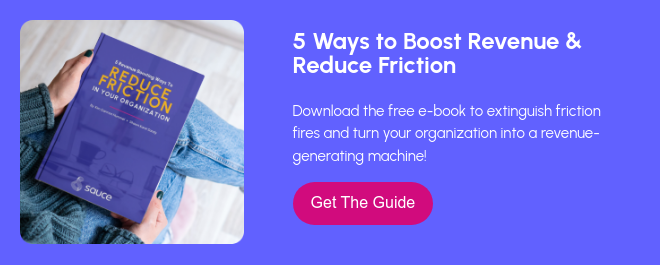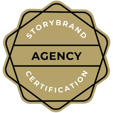Growth-Driven Design: Diving Deeper into Strategy
by Kim Garmon Hummel, on Aug 26, 2019 12:00:00 AM
Breaking Down Strategy for Growth-Driven Design
Welcome back to class! We’ve already talked about why we have transitioned to Growth-Driven Design (GDD) and away from traditional web design; it’s a way to #GrowSmarter! Less risk, faster build, taking advantage of real user data to boost that user experience. Remember all of that? If not, then go here to review. If you do remember, then let’s take a closer look at the first stage of this smarter way to build a website.
Where to Start
Everything you do in digital marketing, from social media marketing to website design, should start with developing a good strategy. It’s the foundation of all of your efforts; so let’s make it count! But where to begin? Here’s a good place: ask yourself what your goals are for your company as a whole and how your website help you achieve them. This is necessary so your website can act naturally as a sales and marketing tool. But we’re not just talking about helping with your sales and marketing goals. Your website can serve as a tool for your other departments such helping your HR department hire the best employees or assist your IT team in troubleshooting real-time bugs.
Next Steps: Focus On The Clients
The next steps are going to involve switching focus from your company to your clients? Why? Because your clients and their experience are what impacts your bottom line. As users of inbound marketing, we tell our clients all the time that the way to grow smarter is to provide customers with an amazing experience that will convert them into your brand advocates.

When a business converts their customers into brand advocates, two things happen:
- They see an increase in repeat sales.
- Their brand awareness spreads organically (AKA word of mouth).
So, to oversimplify, the formula goes as follows: great user experience + happy customers = increase in sales and brand awareness. On the flip side, if the users have a negative experience, your sales plummet. There are a lot of real world examples and studies out there to prove this:
- ESPN saw their revenues jump 35% after listening to their audience and incorporating suggestions into their homepage redesign.
- Forrester reported that an optimized UX design (meaning the design was built with the user experience in mind) can yield better conversion rates up to 400%!
- A report on web performance found that 88% of online consumers are less likely to return to a website after a bad experience.
What we’re saying here is that your customers are extremely important and to enjoy growth and long term success, you want to keep them in mind through this whole process. It’s kind of like the old saying, “happy wife, happy life”? Apply that style of thinking to your business and customers.
Buyer Personas
Now that we have the “why,” let’s dive into how we focus on those future brand ambassadors. In this part you’re essentially going to gather as much information as possible about your current and desired clients and use that to build at least 3 Buyer Personas. You can think of Buyer Personas as fictional characters based on market research and customer profiling. These profiles are going to help shape both your website and your content based off of the actual data and preferences of your target audience instead of simply guessing. Sounds good right? We think so too! In fact, it's one of the things we listed in one of our other posts: 16 Marketing Mistakes You Probably Don't Realize You're Making.
You probably already have a decent idea of who you’re aiming to sell to, but do you know what makes them tick? Do you really know what their wants, needs, questions, and even feels are? How about dreams? What about regrets? All of these things factor into their purchasing decisions so you really do want to hone in on them rather than settling for a very broad hypothetical group.
Let’s set the foundation for building your personas. Start with your current customers, if you have them. Take a look at their demographics, geographic locations, and their role at their company. Conduct interviews! Yes, talking to them can be the best way to get a better understanding of them. Inquire about the challenges they faced before finding you product, how they found out about you and why you solution is a good fit for them. Notice that we said ask them how they found out about you -- this is a good way to help figure out what channels are driving people to your website, aka how leads are finding you. Also, don’t be afraid to reach out to lost customers. They can give you great insights on where there was friction in your process that drove them away, or who might not be an ideal persona for your company.
Another good way to gather information is to talk to your sales team! What kinds of conversations are they having with leads? Are there certain types of leads that close easily? Look for patterns. You’d be amazed at how much of an understanding your sales team has on these leads -- i.e. similar patterns in what the leads are looking for, what type of organization they work for, or pain points they’re trying to solve.
Take all of this data that you’ve gathering and look for commonalities. Once you’ve uncovered those, you can put them together to build your buyer personas which will then lead you to the next steps, creating the journey!
The Journey
Now you’re going to create Buyer Journey Maps, one for each persona. These are outlined maps of the Buyer’s Journey which is the process that buyers go through to become aware of, consider and evaluate, and decide to purchase a new product or service! The overall goal of mapping this stuff out for each persona is to understand where your company fits into that journey, where the customer might drop out, and how you fix that so customers stay in and end up purchasing your product.
of the Buyer’s Journey which is the process that buyers go through to become aware of, consider and evaluate, and decide to purchase a new product or service! The overall goal of mapping this stuff out for each persona is to understand where your company fits into that journey, where the customer might drop out, and how you fix that so customers stay in and end up purchasing your product.
There are essentially 4 stages to the journey:
- Awareness Stage: The buyer realizes they have a problem that needed to be solved.
- Consideration Stage: The buyer defines their problem and researches options to solve it.
- Decision Stage: The buyer chooses a solution that best helps them solve their problem.
- Delight Stage: The buyer is delighted by the experience and product or service, becomes a repeat customer and promoter of your business.
When you’re building these journey maps, it's important to understand that you want to outline them in the customer’s perspective, not your internal process. This is because you need to understand what the customers are going through, and then later you can map your sales process to the customer centric model. Here is a list of things you want to capture for each stage on each map:
Customers' goals and motivations:
- What has motivated them to get to this stage?
- What motivates them to continue moving forward?
- What motivates them to continue moving forward?
- What is their goal at each stage? For example:“I want to make sure I’m paying a fair price”
Emotions:
- What emotions are tied to their motivations?
- How do you customers want to feel at each stage?
- How do you customers actually feel at each stage?
Actions:
- What types of activity is taking place at each stage?
- What activity is leading them to move forward in the journey?
- What actions are they not taking?
- Are they asking questions? What questions are they asking?
Touchpoints:
- What are the points of interaction with your brand, or outside of your brand, as they try to meet their goals and needs?
- Are they tools or resources?
- How are they interacting with them?
Once you’ve mapped all this out, now start mapping your website and sales process to align with the customer focused journey. Share it with your team and look for points where improvement can be made on your end. Which brings us to the final part of the Strategy Stage, your website!
Finally: Your Website
With all of this market research and development complete, we can finally move on to your website-specific strategy and tactics. Begin by reviewing your current website and creating the game plan to transition to the new design. Our recommendation is to divide them into categories: high impact, medium impact, and low impact. The high impact are the main pages that you know you need into the new design first (they make the biggest impact on your customers). The medium will be focused on second and then you’ve got the low impact pages. These are going to be simply transitioned into the new design and can be optimized later. For example, maybe a couple of blog posts that didn’t get a lot of views.
While you’re building the game plan, brainstorm ways to level-up each aspect of the site to better align with your personas. One thing to work on is your search engine optimization (SEO); conduct an audit on your current site and work to optimize it better for search engines (aka, Google). Also, take a look at how your website is laid out and tweak your website’s architecture to enhance user flow. Lastly, consider your branding and incorporate that into the visual design of the site as well as integrations and technical considerations to improve your site.
Lastly, brainstorm a wishlist on creative, game-changing ideas to solve your unique user challenges and hit your business goals. These might not be on the initial Launch Pad site but as you get into the final stage of growth-driven design, you can start to incorporate ones that positively impact your clients.
Take The Guesswork Out Of Growth-Driven Design With Sauce Agency
I know, it seems like we just covered a lot. The strategy stage is crucial to developing a website that not only enhances your business but drives engagement from your clients. Investing your time and energy into going through this stage the right way sets your website up for success in the long run. And if you don’t remember anything, at least take this one home with you: your website is a tool for your marketing and sales team, but your primary objective is to optimize your site for your users. Because your clients are what build your business!
.webp?width=12693&height=4513&name=Sauce%20Logo%20Dark%20Ht%20(1).webp)

.webp?width=180&height=64&name=Sauce%20Logo%20Dark%20Ht%20(1).webp)












